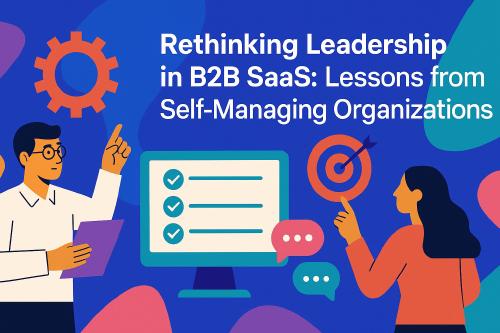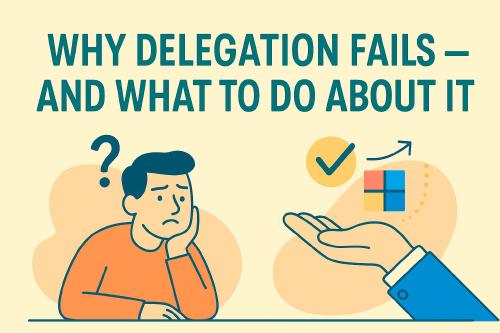Deciding Better: How to Make Faster, Smarter, and More Effective Decisions in Your Organization
The quality of your decisions influences the quality of your life. The quality of the decisions in your organization determines your company’s future.
Decisions are the crossroads at which you have the opportunity to influence direction. In a growing software organization, there are probably tens or hundreds of decisions made every day. But are those great decisions? Are those decisions made fast? Is your company improving how decisions are made? Are decisions made at the right level by the right people?
Judging from experience, the answers to these questions range from sometimes to rarely. And that is not surprising. While people might learn at some point how to make decisions about their lives as individuals, we rarely teach people how to make great decisions in groups and within organizational constraints.
The result? Either some (self-)elected leaders who make the majority of decisions or endless discussions between peers about the right path forward (often in more and longer meetings). This leads to people being blocked by waiting for a decision or a fast decision that most people don’t understand or cannot commit to.
That doesn’t sound too promising. But there is hope. Only by reflecting on how decisions are made in the organization and why, leaders can find ways to improve decision-making. If they go a step further and learn/train tools and methods for collaborative and distributed decision-making, improvements can be seen within weeks.
But let’s start with the following question: What is a good decision?
The Anatomy of Good Decision-Making
Many people will say that decision-making is good when the outcome is good. And this is part of the problem. Because if this is how we judge decisions, we cannot be certain about the quality of our decision-making while we are making it – only in hindsight. Furthermore, we would have no means to improve our decision-making, as the quality depends on a plethora of unknown variables.
And the truth is: You can follow the best possible decision-making process, consider all the information and options you have, and still yield a bad outcome. Simply because the world is complex and there is uncertainty. If there weren’t, you wouldn’t need to decide in the first place because the best path forward would be obvious.
Therefore, if we want to judge our decision-making, we need to focus on the context in which the decision was made:
- Was all the available information considered?
- Were all the people involved that could have meaningful information?
- Were all people involved that would be affected by the decision?
- Did we really put all options on the table (even those we personally disliked)?
If we can truthfully answer yes to all these questions, the likelihood is high that we made the best possible decision. If you are not sure about one of these questions or need to answer no: Congratulations, you might have found an opportunity to improve your decision-making.
How to Collect All the Available Information and Options
A decision can only be as good as the options that were available and the information that was used to choose one of these options.
Many companies distribute information on a need-to-know basis. The main problem here is that leaders consequently fail to judge accurately what information someone might need. Therefore, default-to-open is key: Share information openly unless there is a really good reason not to. (More on this in my article Default to Open.)
Invite other people to the decision. Especially people who are different from you, have a different background, and might even have an opinion you do not like. In the end, all those different perspectives are there for a reason and will point you to bits of information you might not have considered otherwise.
Why Traditional Brainstorming Fails
When in a group, avoid the traditional brainstorming to surface ideas. It does not work (research backs this up). People tend to censor themselves, favor safe ideas, or anchor their suggestions on the first thing said.
A better method? Secret Brainstorming + Affinity Mapping.
- In the secret brainstorming phase, participants anonymously submit ideas.
- Ideas are then grouped into themes (affinity mapping) before being reviewed collectively.
This approach removes bias, encourages creativity, and ensures ideas are evaluated based on merit rather than who proposed them.
How to Prepare for a Decision
Once you are sure that you have all the information and a sufficient number of options, it makes sense to document this:
- What is the situation in which we need to decide?
- Why now?
- What information do we have that influences the decision?
- Which options do we consider?
A difficult decision is always the choice between options that all look equally good or bad. It is always about trade-offs. Different people might make different trade-offs, and this is what makes deciding in groups hard.
Nonetheless, laying out the options, the context, and potential trade-offs creates a common ground for understanding the decision.
How to Decide Effectively as a Group
Leaders often struggle with acceptance and adoption of their decisions. And the reason is that they don’t involve the people affected by the decision – neither in figuring out the options nor in making the actual decision. People then either do not understand why a decision needs to be made in the first place, or they do not understand the option that was selected, or they disagree with it.
All of these issues can be completely avoided when you involve people in the decision-making process.
Doing this asynchronously as mentioned before is one option, but ultimately, you still make the call as a single person. There is, however, also an option to decide in a group in an efficient and effective manner.
Delegation Needs Clarity
Independent of the decision-making process or method you and your team are selecting, there is one last trap I frequently see leaders fall into: Delegation without clarity.
People need to have an understanding/feeling/sense about “how good looks like.” What does the company want to achieve? What is the purpose? What is the context in which we are operating?
If that is unclear, delegation of decisions or projects will usually not lead to results that you as a leader would consider “great.”
Therefore, defining a clear mission, purpose, and strategy (ideally with your team) is crucial to delegate decisions and projects successfully.
Conclusion: Better Decisions – Better Companies
Decisions shape the future – of your life, your team, and your company. Yet, in many organizations, decision-making is either too centralized, too slow, or too chaotic.
The good news? It doesn’t have to be this way.
By shifting the focus from outcomes to process, leaders can transform decision-making from a bottleneck into a strength. Collecting the right information, involving the right people, structuring decisions clearly, and using methods like systemic consensing can significantly improve the speed and quality of decisions.
Most importantly, great decision-making isn’t about finding the perfect answer – it’s about making the best possible decision with the information available, ensuring alignment, and enabling execution.
My question to you: How will you start improving decision-making in your organization today?
How to Fix Decision-Making in Your Company (for Good)
Let’s be real – decision-making is one of the biggest bottlenecks in any growing company. Either decisions take forever, or they happen too fast with little buy-in. Both lead to frustration, wasted time, and teams that feel stuck instead of moving forward.
That’s why we built a no-nonsense offer to help you and your team make better decisions, faster, and with real alignment – without endless back-and-forth or top-down guesswork.
Here’s what you get:
✅ Battle-tested decision-making methods – so you stop relying on gut feeling alone
✅ Templates & frameworks – to structure decisions clearly without reinventing the wheel
✅ Hands-on decision-making workshop – where we tackle real decisions in real time
✅ Ongoing sparring & coaching – to make sure this sticks and transforms how your team operates
If you’re tired of decision chaos and want a smarter, smoother way to run your company, let’s talk.
Book a free 30-minute call with me and let’s see if this is a good fit – no pressure, just clarity.





Use the share button below if you liked it.
It makes me smile, when I see it.